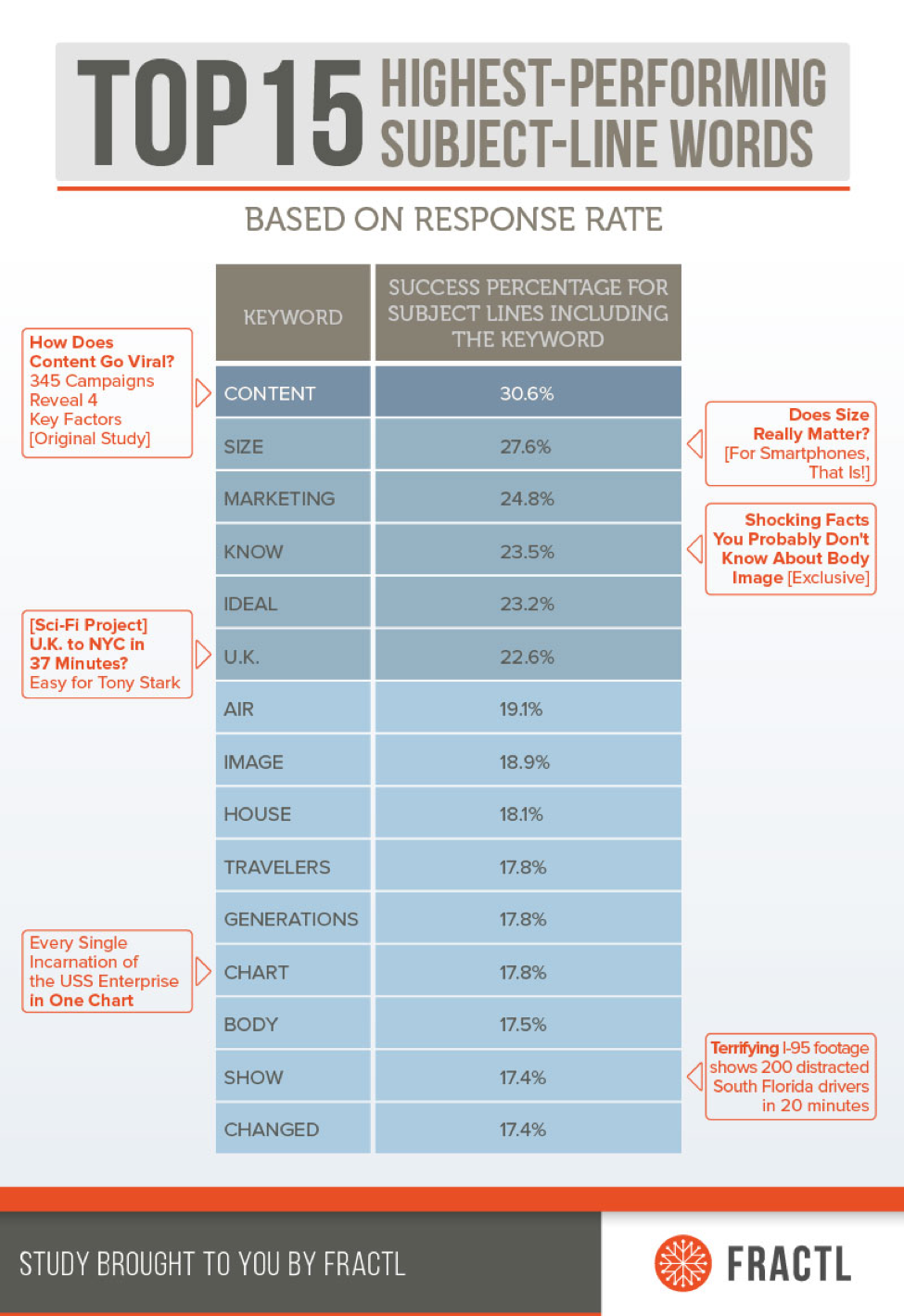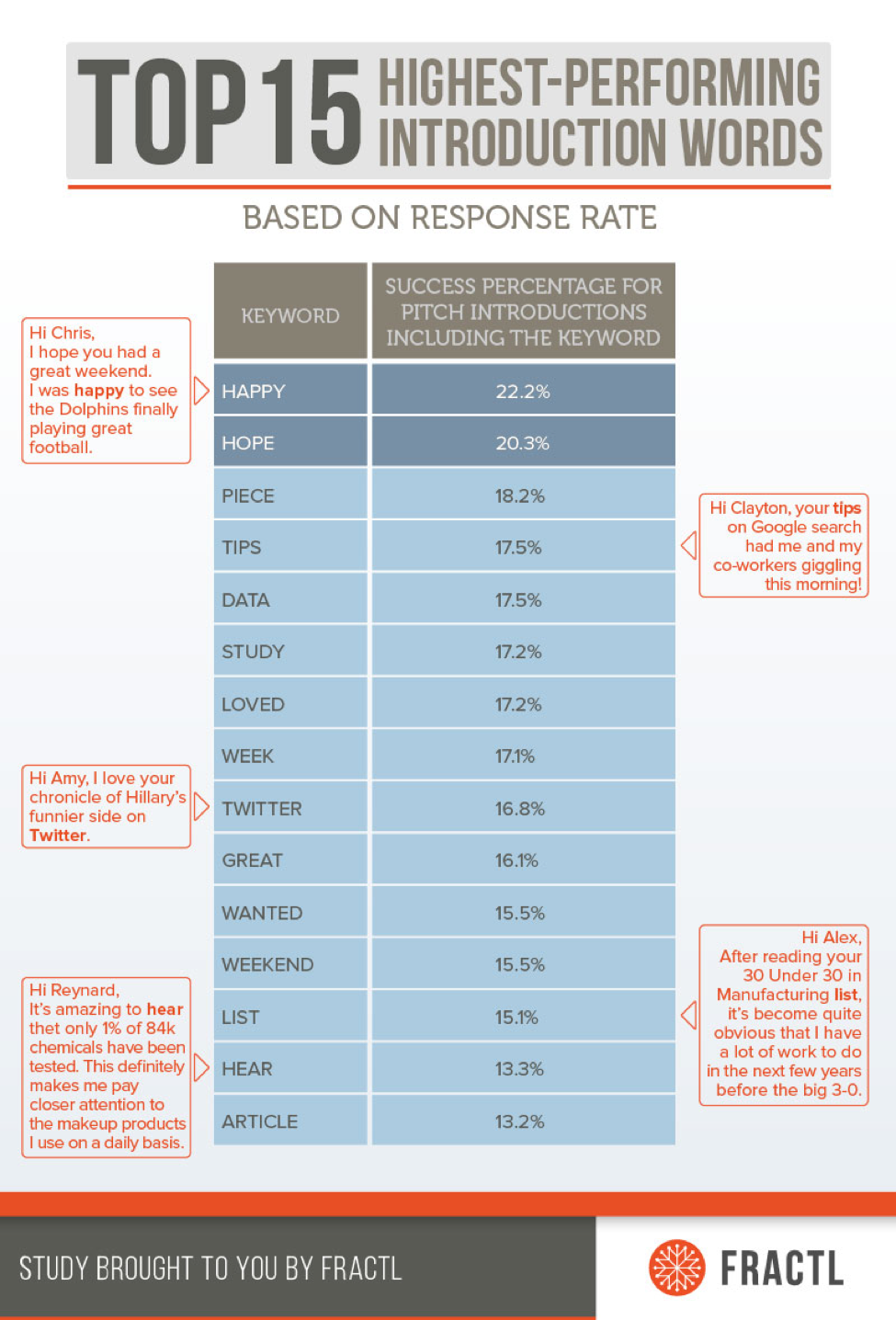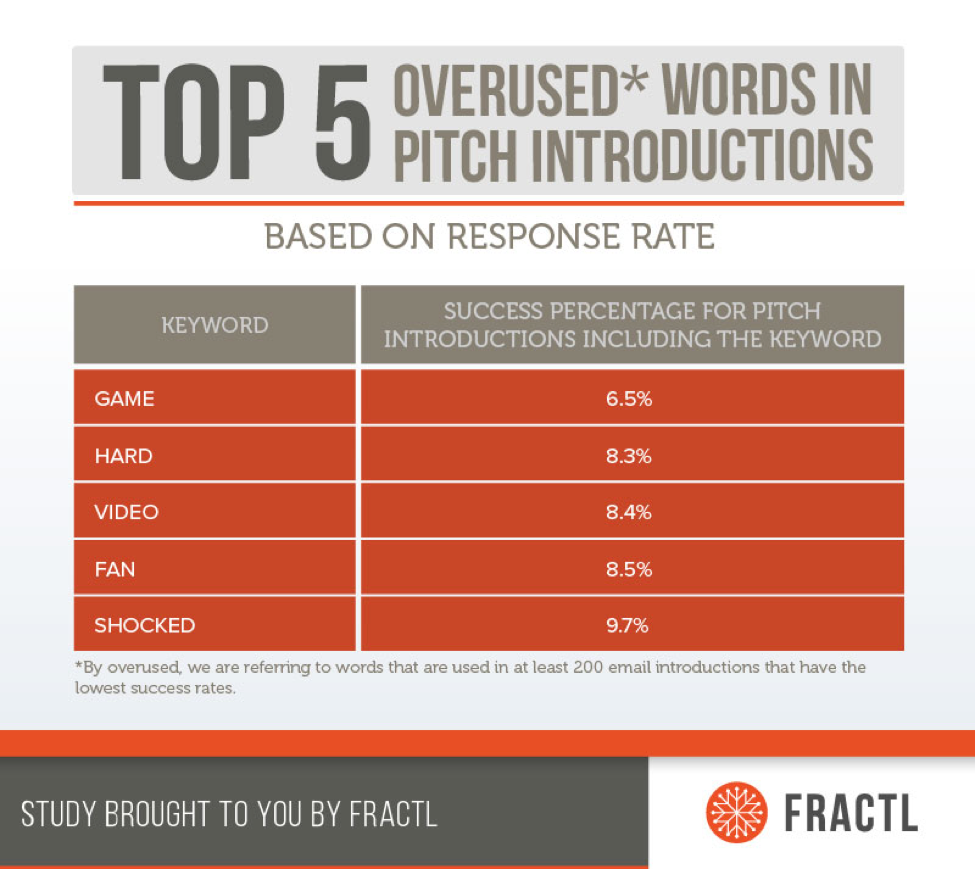For PR professionals like myself, it’s painful to receive a harsh rejection from a journalist we’ve pitched. Even worse? No response at all. We share a common recurring nightmare of ending up featured in a “the worst pitch I ever got” story, but who would blame us? When you invest time researching a writer’s beat and interests to craft a perfectly tailored pitch, it feels personal when your hard work is rejected, ignored, or unopened.
With a finite number of writers who cover the topics related whatever you may pitching, it often seems PR pros outnumber journalists. It’s difficult to break through the noise. For all anyone can see, you’re just text on a screen. So we’re left with the Million Dollar Question: How do I get a response to my pitch?
Fractl’s media relations team uses BuzzStream as an outreach relationship management tool, and we’ve sent a whopping 26,988 emails through the platform between October 2014 and May 2016. We realized we could learn a lot from all of these emails, so we went back and combed through each pitch to gain better insights into what makes an email pitch successful. Focusing mainly on subject lines and personal introductions, we’ve unlocked the secrets to crafting a successful pitch.
What’s in a great subject line?
There’s little more important than a subject line when it comes to a pitch. Nearly two-thirds of publishers determine whether or not to open an email solely based on the subject line. Like your best joke on Twitter, you have to make the words you choose for that limited space really count, or your goal could get lost.
Taking a look at our top 15 most common words in successful pitches, here are a few things to keep in mind as one crafts a subject line:

1. Choose words that provide geographical ego-bait
Our research shows that U.K. writers are especially willing to open emails that reference their home country, but this takeaway can easily be applied no matter where an editor is located.
Tip: Is the journalist you’re pitching based in the Big Apple? Try pulling a statistic from your study that’s directly related to New York. Adding location-specific data to your subject line is an easy way to show you did your homework on the journalist as well as immediately pique their interest.
2. Incite laughter
“Size” was our second most successful word used in subject lines, and a deeper dive found that its use was almost always as an innuendo. A majority of journalists are open to humorous pitches, but always use your best judgement.
Tip: A writer’s Twitter is a great way to gauge how big their funny bone is.
3. Highlight the good stuff
Many journalists receive hundreds of pitches a day, so it’s no surprise that using words that immediately highlighted key takeaways were so successful. “Know,” “show,” and “changed,” all serve this purpose, and they also all made it on our list of the most effective words.
Tip: Before you start pitching, make a quick, bulleted list of what you find most surprising or interesting about the project. Try shrinking each aspect down to 10 words or less, and you have a handy list of potential subject lines ready to go.
4. Make it verticalized
Words like “traveler,” “body,” and “marketing” were successful because they were used in a way that related to the prospect’s beat. This is another case where it’s easy to show you did some research and aren’t sending out the same pitch to any valid email address you can find.
Tip: Want to go one step further? See if you can relate your content’s subject line to a story they recently published. Not only are you showing that you know what they write about, but that you actually read their writing, too!
So a journalist opened your email. Now what?
Mastering the art of getting an email opened is only half the battle; the other part is getting a journalist to actually respond to you. An inbox can be full of templated pitches, so any effort you can make to personalize your email is key in earning a reply. A great way to do this is in your introduction since it can play a big part in whether or not a journalist chooses to read the rest of your email – and ultimately to write about your content.
Like we did earlier with subject lines, let’s take a look at the most commonly used words in the introductions of successful pitches:

1. C’mon get happy
By and large, the words used in our most successful pitches lean towards the positive. “Happy,” “hope,” “loved,” and “great,” all elicit upbeat feelings, as well as a higher than average response rate. Perhaps in a world overwhelmed with negativity in the media, a lighthearted pitch introduction is the perfect contrast.
2. The human experience
Another trend among these keywords is that they show whether or not you’ve been paying attention to their writing. “Hear,” “article,” “list,” and “piece,” among many others, are all used to reference something the journalist wrote recently.
Tip: Whether it’s an article, a recent tweet, an Instagram post, or even something on their personal blog, there is no shortage of ways to connect with a journalist – just be sure to do so sincerely and go beyond the surface. For example, if you’re pitching a sports writer, don’t just talk about last night’s game. Millions of people also caught the game last night, so you’re not standing out. The word “game” is also the least successful word from our study. Instead, try scoping out their social media for photos of pets or a recent concert or conference they have have attended. Bringing that up in the pitch will make you stand out from the tons of sports content and conversation they’re used to.

Key Takeaway
Overwhelmingly, the common denominator in all of our successful subject lines and personal connections is that we acknowledge the humanity in these interactions. Prove that you’re not a robot and that journalists aren’t simply machines pumping out stories. If you always keep this principle in mind, you’re more likely to build some strong writer relationships that benefit both parties – and what more could a PR professional want?

 End-to-end outreach workflow
End-to-end outreach workflow



 Check out the BuzzStream Podcast
Check out the BuzzStream Podcast







